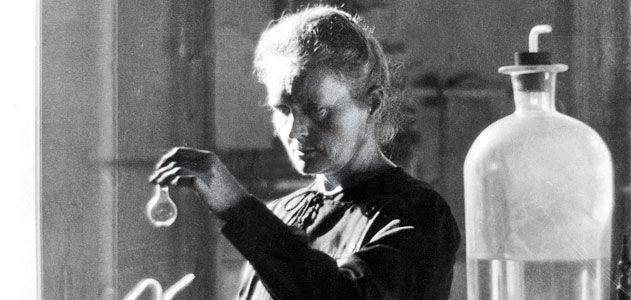Marie Curie: A Scientific and Engineering Pioneer

In the modern information age, it is hard to imagine a world where knowledge was restricted to only a few. But that is the world that the scientific and engineering pioneer Marie Curie grew up in. As a Polish woman in the nineteenth century, she wasn’t allowed to attend a public university in her home country. Despite these barriers, Marie Curie pursued her passion for science. She became the first woman to win a Nobel Prize and the only person to receive the Nobel Prize in two distinct scientific fields. Her inventions helped millions of wounded soldiers during WWI, and her discoveries helped build the medical science we have today.
Born Marie Sklodowska on November 7th, 1867 in Warsaw, the Kingdom of Poland—just a decade before Einstein was born—she grew up in a post-Industrial Revolution world. As a child, Marie attended all-female schools and received tutoring but was not allowed to attend a public university because she was a woman. Instead, Marie studied through a secret educational institution known as the Flying University. The Flying University, hidden from the Russian Empire that occupied Warsaw at the time, sought to educate the Polish youth in an environment free from Russian censorship. The university held clandestine classes scattered throughout the city and even had a secret library.
When she was 24 years old, Marie left her homeland and moved to Paris with her sister. While she was searching for larger laboratory space to work in, a professor introduced her to Pierre Curie. Their shared love for science brought Pierre and Marie together. However, when Pierre proposed marriage, Marie refused. She wanted to return to her native country and teach at Kraków University. She did return to Poland, but the university denied her the teaching position because she was a woman. Pierre sent a letter, urging Marie to return to Paris and earn a Ph.D. there instead. So she did. On July 26th, 1895, dressed in the same dark blue outfit she used for her laboratory work, Marie married Pierre Curie. Marie loved and missed her native Poland. She named one of the elements she discovered—polonium—after her native country. She hired a governess to teach her daughters Polish and took her family on trips to visit her homeland.
Despite a constant uphill battle to prove that she, as a woman, was capable of scientific discovery, Marie Curie continued on to coin the term “radioactivity”, discover two chemical elements, and contribute to the same League of Nation advisory committee as Albert Einstein. Since the dangers of radiation weren’t known at the time, Marie would carry around test tubes of radioactive chemicals in her pockets and kept them in her desk drawer, where she noted the faint glow they gave in the dark. During WWI, Marie engineered portable options for X-rays to treat the soldiers. Without any sort of protective shield, she personally directed their use in the field hospitals. She died of aplastic anemia caused by radiation damage in 1934, at age 66.
Einstein said that Marie Curie was likely the only person who couldn’t be corrupted by fame. She and her husband regularly turned down awards and honors and redirected monetary gifts to scientific research. Marie founded the Curie Institutes, one in France and one in her beloved Poland, which now performs specialized research in cancer treatment. This scientific pioneer was a woman of fortitude who refused to let her circumstances determine her destiny.
info@hlhprototypes.com
By Esther Davies
